Dear traveler, we may get commissions from your reservations made through links in this article, at no extra cost to you. This helps keep the site running and free for all. Thank you!
Last Updated on March 22, 2024
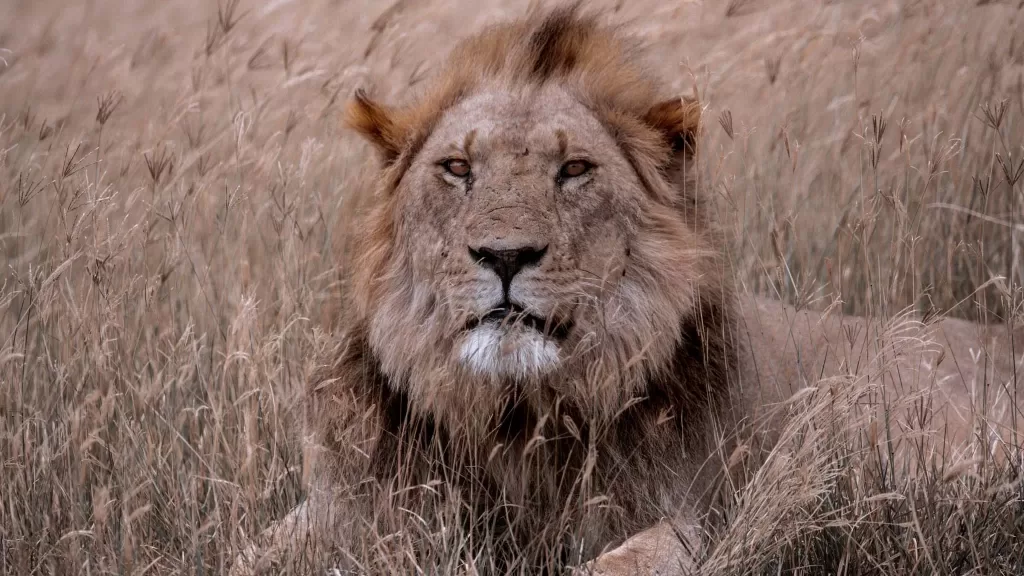
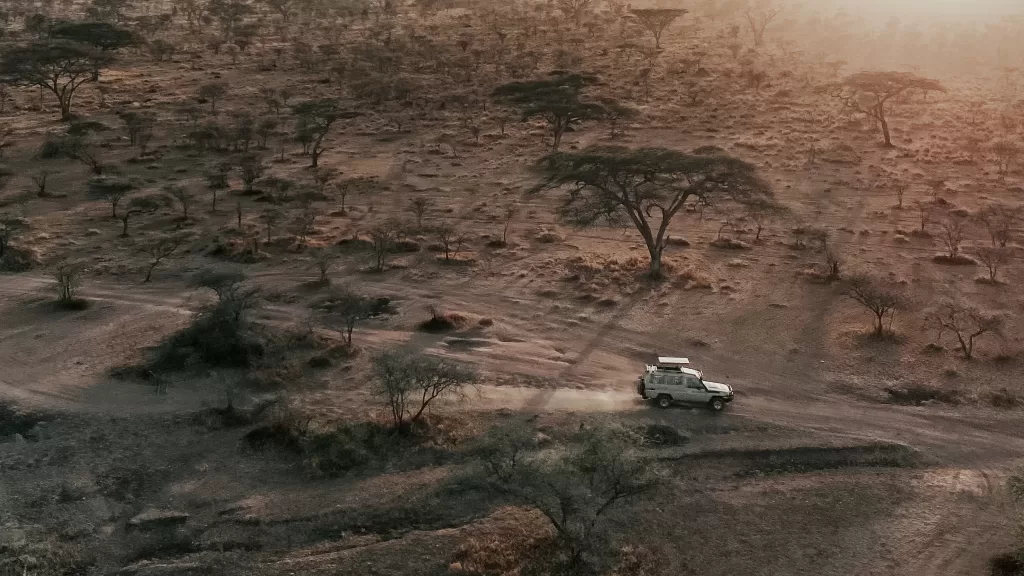
If you ever dreamed of going on a safari, then Tanzania is an absolute must-visit!
Tanzania has over 22 National Parks, including the world-famous Serengeti, making it a paradise for animal lovers. If you are ready to embark on a week-long safari adventure this is the perfect guide you need for your journey ahead.
Map
1 Week Itinerary
This is what a 5 day safari might look like:
Day 1
- Arriving at Arusha, Kilimanjaro Airport
- Night in Arusha
Day 2
- Early morning wake-up call and off to Tarangire National Park
- An entire day dedicated to a game drive (name given to a trip within a national park) in Tarangire
- Night in Tarangire
Day 3
- Another early start, as you make your way to the heart of Serengeti National Park
- Game drive in Serengeti
- Night in Serengeti
Day 4
- Sunrise hot air balloon safari
- More wildlife encounters in the stunning Serengeti
- Night in Serengeti
Day 5
- Game drives in Serengeti
- Maasai Village visit
- Night in Ngorongoro
Day 6
- Exploring the Ngorongoro crater, a place teeming with wildlife
- Heading back to Arusha
- Night in Arusha
Day 7
- Return flight from Kilimanjaro airport
Accommodations in Tanzania
We recommend you book your entire tour with one of the many safari tour operators – we booked with Soul of Tanzania, nonetheless if you wish to book the hotels by yourself we will leave links to Booking under each of the days of the guide
Detailed Tanzania 1 Week Guide
Day 1: Arrival in Arusha
Arusha is a large city located in the north of Tanzania, it’s the the city that’s most used by travelers as a starting point of their safari journey, given its close location to the most visited national parks.
It’s a vibrant town located in the base of the beautiful Mount Meru, we’ve arrived quite late so we didn’t get the chance to explore it, if you do arrive early in the day you can also consider starting your safari right away in Tarangire!
Day 2: Visiting Tarangire National Park
Here’s a quick preview of what you might spot in the various parks starting with Tarangire. Keep in mind, as our guide frequently reminded us, a game drive is all about luck and opportunity!
Your drive from Arusha to Tarangire can take between 2 to 3 hours.
This National Park is like a heaven for elephants. Thanks to anti-poaching and conservation initiatives, the elephant population has grown in the Tarangire-Manyara area, allowing you to witness the majesty and wonder of these creatures. If you’re fortunate, you might even have some up-close encounters.
The scenery is equally stunning, with the opportunity to marvel at baobab trees. During the dry season, the Tarangire River draws in various animals such as wildebeest, zebras, elephants, and gazelles, so you’ll be surrounded by plenty of wildlife.
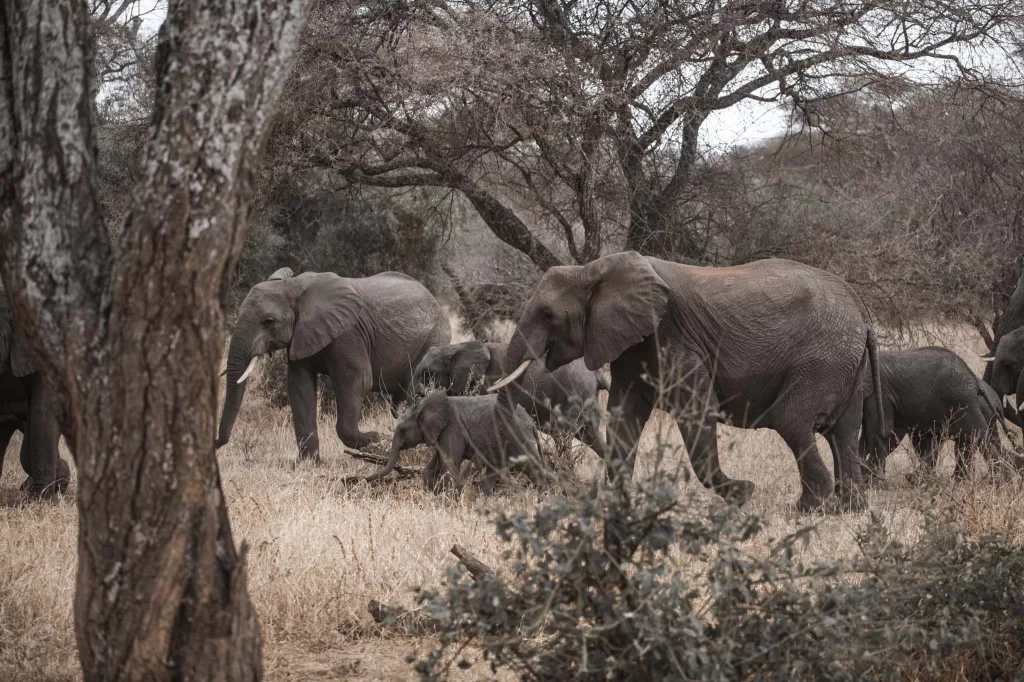
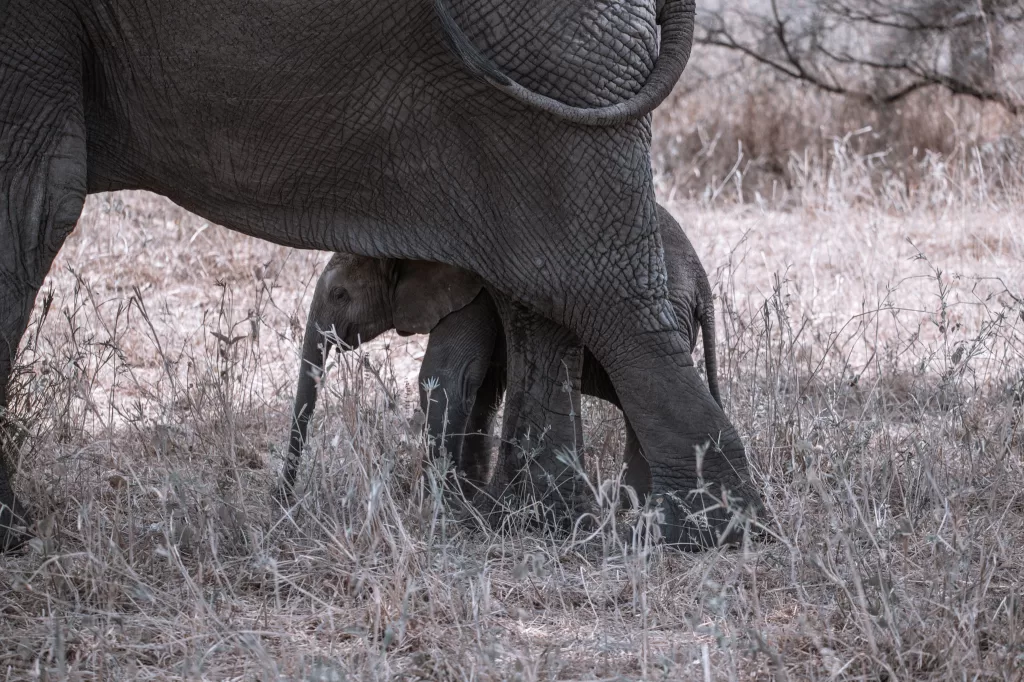
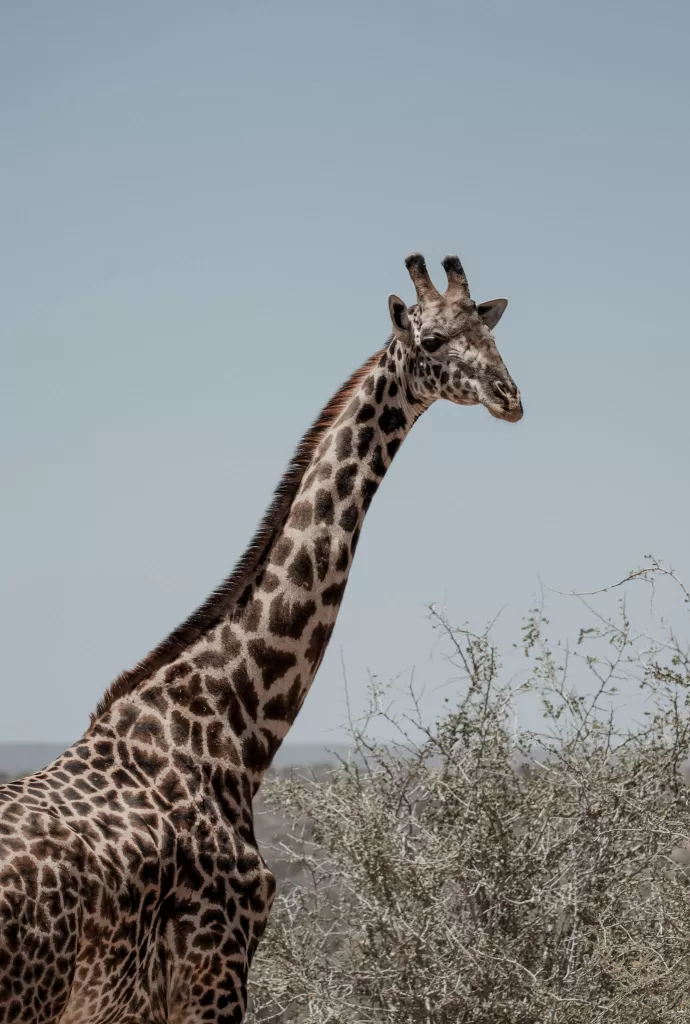
Day 3 & 4: Visiting Serengeti National Park and Hot Air Balloon
Serengeti, meaning “endless plains” in Maasai, and is simply breathtaking. From the landscapes and sunrises to the wildlife, it’s perfect in every way. We couldn’t find a single fault with Serengeti. What made us especially happy is how well the park is protected. We’ve visited many national parks during our travels, but we’ve never seen one so raw, wild, and pristine. It’s truly amazing.
The drive between Tarangire and Serengeti can take between 6 to 7 hours, it’s a long journey mostly due to the type of roads, you can ask your guide to stop as per your need.
In Serengeti, you’ll encounter a wealth of wildlife, including lions, leopards, zebras, gazelles, elephants, and giraffes, just to name a few. Depending on when you visit, you might witness some remarkable events like the calving season or the Mara River crossing. Serengeti has so much to offer, but what it is most renowned for is the Great Migration. Check the When to Visit Tanzania section on this page for more information.
During these 2 days you will drive through the wilderness of this beautiful and unique landscapes, having the opportunity to eat your lunch with a privileged front row seat to Nature! With luck you will be able to see a lot of the rich wildlife and by the end of the day relax in one of the many lodges.
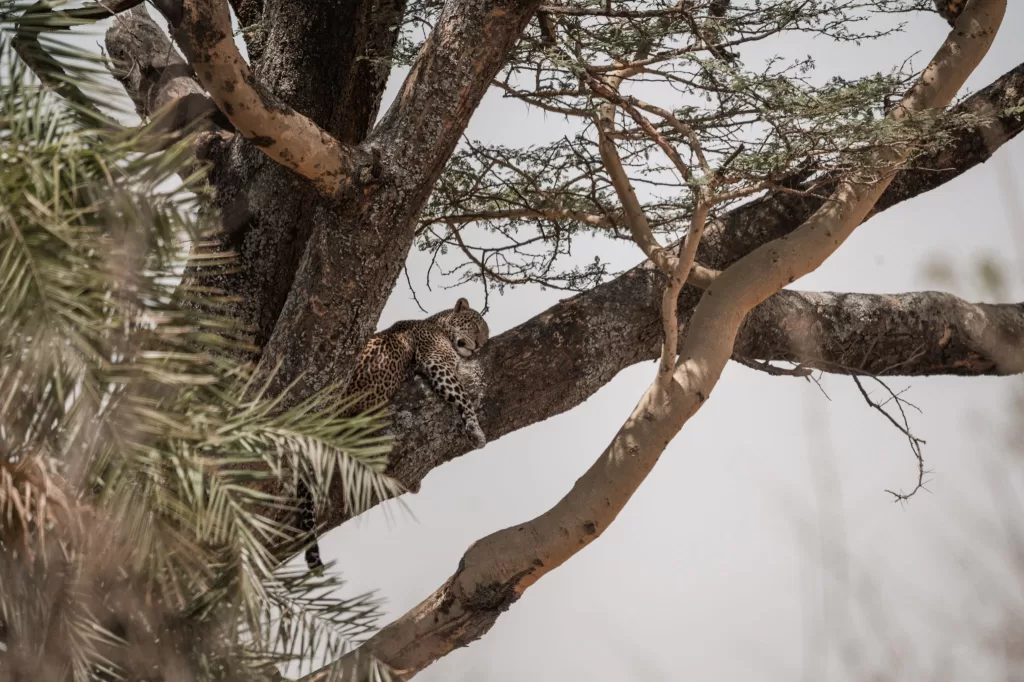
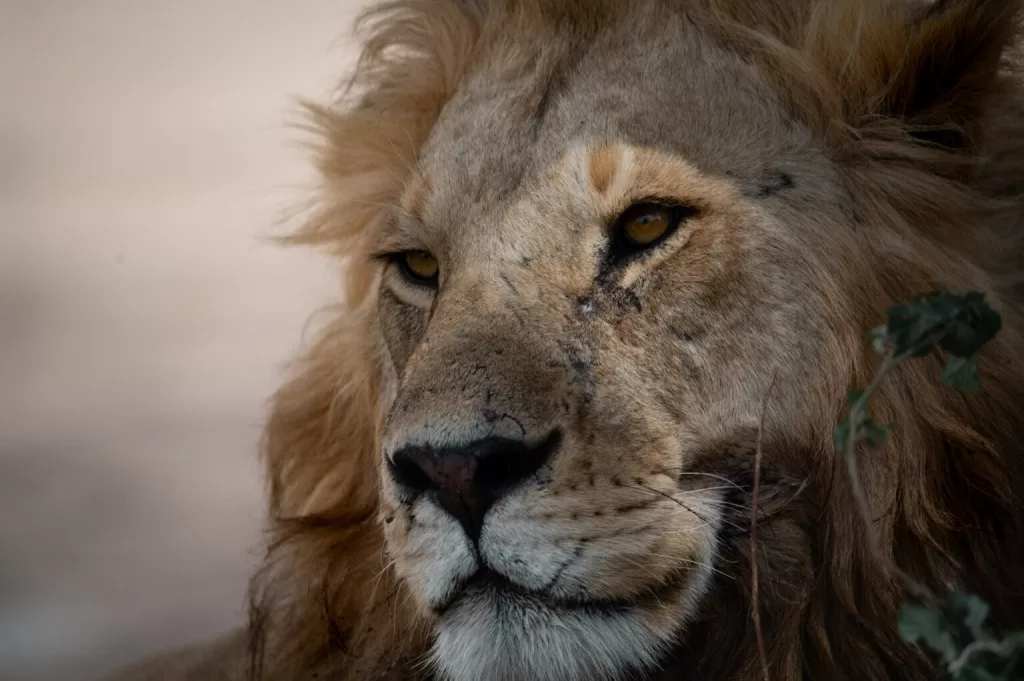
In our second day in Serengeti, we did a hot air balloon safari in which is a truly surreal experience. While it’s a bit on the expensive side, costing around 500 US dollars, it’s money well spent. We booked ours with a company named Serengeti Balloon Safaris.
You’ll have to wake up quite early, around 4 am to 5 am, depending on your hotel’s location, so you can arrive before sunrise at the departure area. They’ll walk you through some safety procedures and how to enter the balloon, which is a bit unique as the basket starts on its side and tilts upright for takeoff.
Once you’re in the air, it’s an incredibly smooth and relaxing experience. You’ll spot animals below you and witness the sunrise from above. Landing might be a bit rough, but it’s manageable and not scary at all. The experience ends with breakfast in the middle of the bush. It’s simply perfect!
Day 5: Visiting the Maasai and Travel to Ngorongoro
You have the chance to do one last small game drive in the morning before departing to Ngorongoro crater, the last natural park of the itinerary.
The drive between Serengeti and Ngorongoro can take between 4 to 5 hours
Before arriving you can stop in one well known Maasai villages.The Serengeti-Mara region, which spans across Tanzania and Kenya, is home to a diverse tapestry of ethnic groups, with the Maasai being among the most renowned. While exploring Tanzania, you’ll come across Maasai villages, particularly in the regions surrounding the national parks, such as the Ngorongoro Conservation Area. Interestingly, before these lands were designated as protected areas, the Maasai called the Serengeti home.
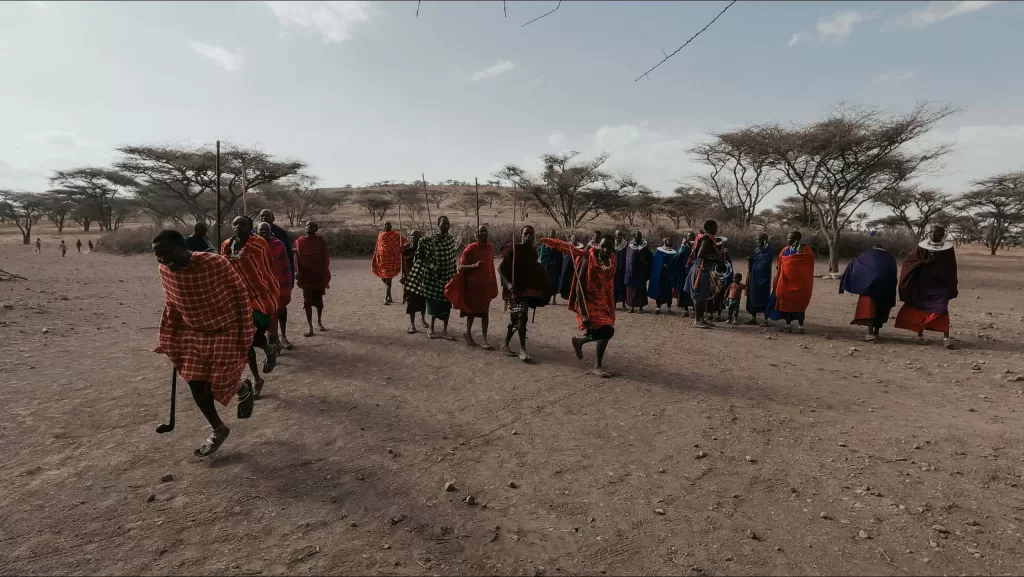
The Maasai people are instantly recognizable by their iconic red robes, which stand out vividly against the landscape. They have a rich and vibrant cultural heritage, known for their distinctive attire, intricate beadwork, and traditional ceremonies. The Maasai’s coexistence with the wildlife of the Serengeti is a testament to the harmonious relationship between humans and nature that has endured for generations in this remarkable region.
Keep in mind that even though the Maasai kept some of their old traditions, they also had to adapt to the changes in today’s world, drinkable water, children school fees, are among some of the necessities which require them to earn money to sustain their current lives, expect an entrance fee (by the time we are writing this it was around 20 to 30 US dollars and you will be encouraged to purchase some of their local gifts, although this last one is not a mandatory contribution.
Still it’s always a treat to acquire knowledge of the world and it will give new perspectives on a completely different lifestyle.
By the end of the day, you will be arriving and relaxing at the biggest volcanic crater in the world, Ngorongoro Crater.
Day 6: Exploring the Ngorongoro Crater and Journey Back to Arusha
The Ngorongoro Crater, situated within the Ngorongoro Conservation Area, is a geological marvel. Unlike Tarangire and Serengeti, which are national parks, this area is inhabited by the semi-nomadic Maasai people, adding a unique cultural dimension to the wildlife experience.
This remarkable site is the world’s largest unbroken caldera, and the views from the rim are truly spectacular. As you descend into the crater, you’ll pass through lush green forests, eventually transitioning into a vast savanna.
It’s in this remarkable setting that you might be lucky enough to spot one of the endangered black rhinos that roam the area. The Ngorongoro Crater is a natural wonder, a volcanic caldera teeming with wildlife, making it a must-see during your Tanzanian adventure.
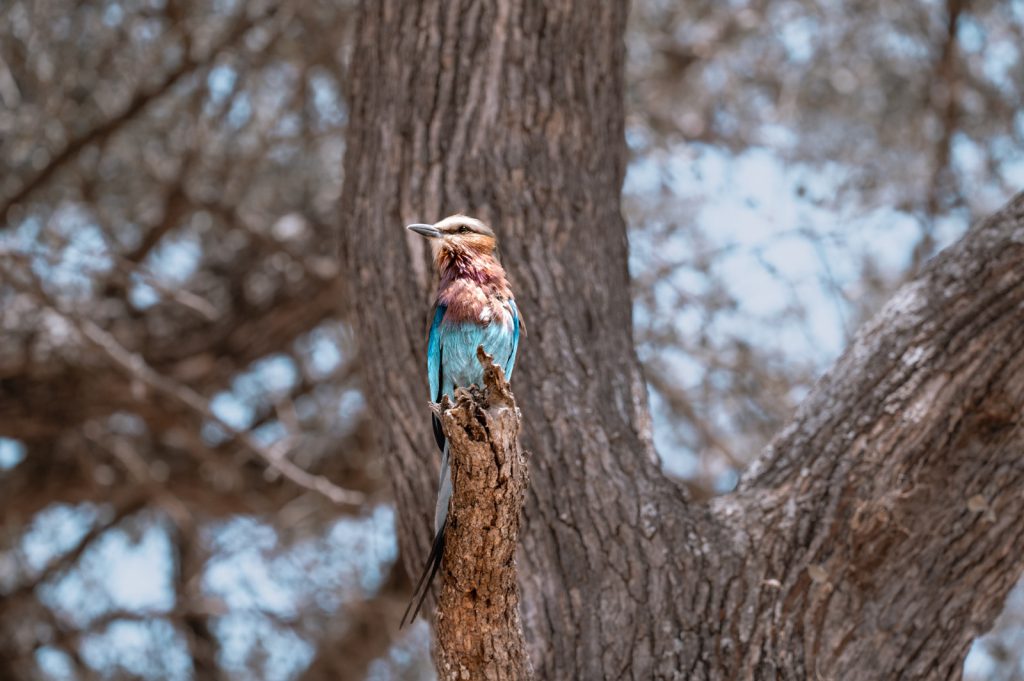
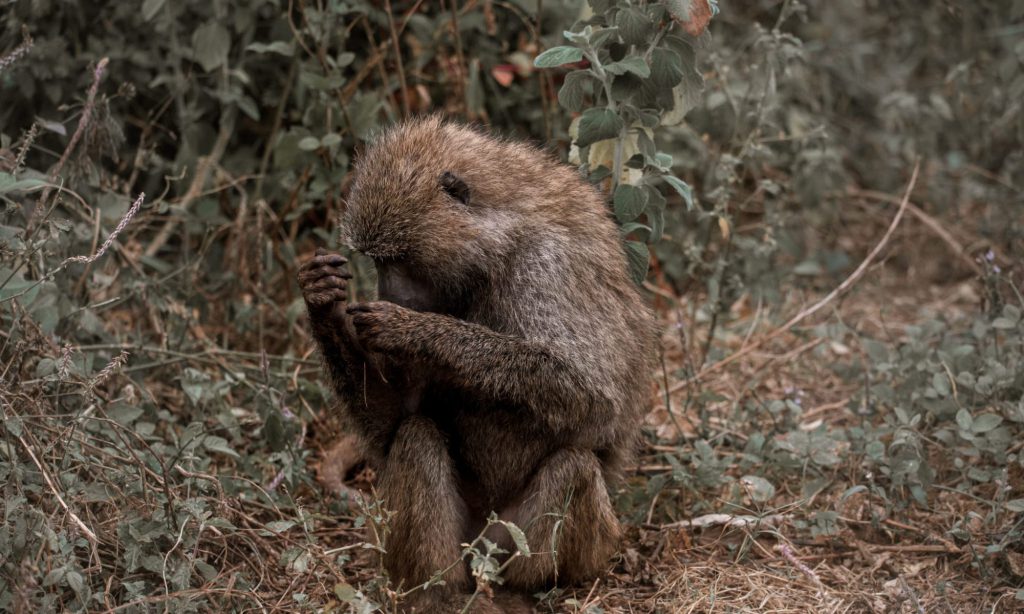
Same as the other natural parks it has a variety of landscape within it from swamp areas, to grass lands and pure Savannah, it also has a bit of a micro climate, you might get some intense fog and even rain, but regardless its a true spectacle of nature!
By the end of the day we made our way back to Arusha, a drive that takes around 3 to 4 hours.
Take this time to relax from all the driving and to process the wonders you witnessed.
Day 7: Flight Back Home
After this astonishing experience it was time to head back home, depending on the hour of your flight you can still take some time to see the city of Arusha and explore its culture, we didn’t had that opportunity as we went straight home and with a long journey ahead, with the promise of getting back as soon as possible to African lands!
SUGGESTION: If you happen to have a few extra days to spare, you can easily extend your adventure to a 10-day itinerary by adding a beach retreat in the enchanting Zanzibar. And for those with a spirit of adventure and some budget left, there’s the option of going gorilla trekking in neighboring Uganda. Keep in mind that the latter adventure might require around 4 to 5 extra days.
When to Visit Tanzania
Below there’s a map with the best times of the year to travel to Tanzania depending on your goal:
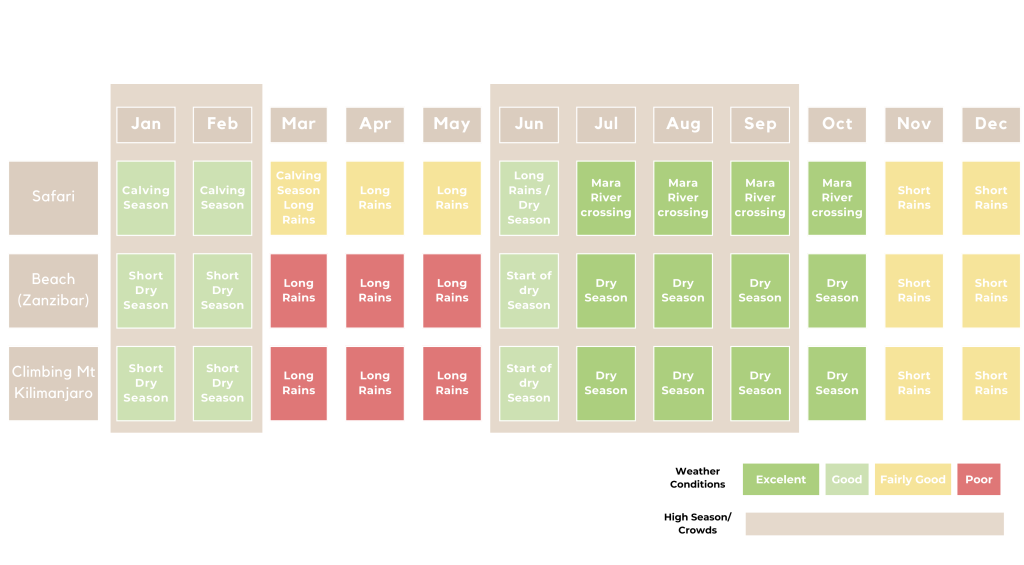
Great Migration
The Great Migration in the Serengeti is one of the most incredible wildlife spectacles on Earth. It’s the annual journey of millions of wildebeest, zebras, and other herbivores across the Serengeti ecosystem in search of greener pastures. This awe-inspiring event is divided into several phases:
- Calving Season (January-March): In the Southern Serengeti, wildebeest give birth to their young calves, attracting predators.
- Grumeti River Crossing (May-July): As the herd heads north, it faces the daunting challenge of crossing the crocodile-infested Grumeti River.
- Mara River Crossing (July-September): The most famous and dramatic phase, wildebeest brave the Mara River, navigating through crocodiles and strong currents.
- Return to the South (October-December): With the dry season approaching, the herd starts its journey back to the southern Serengeti, following the rains and green pastures.
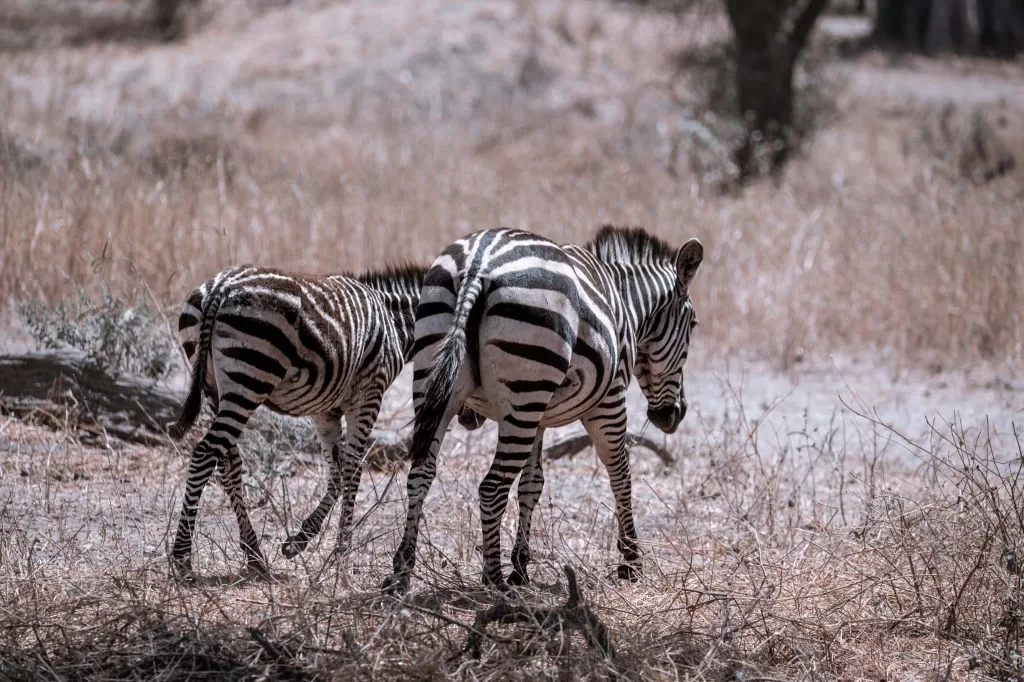
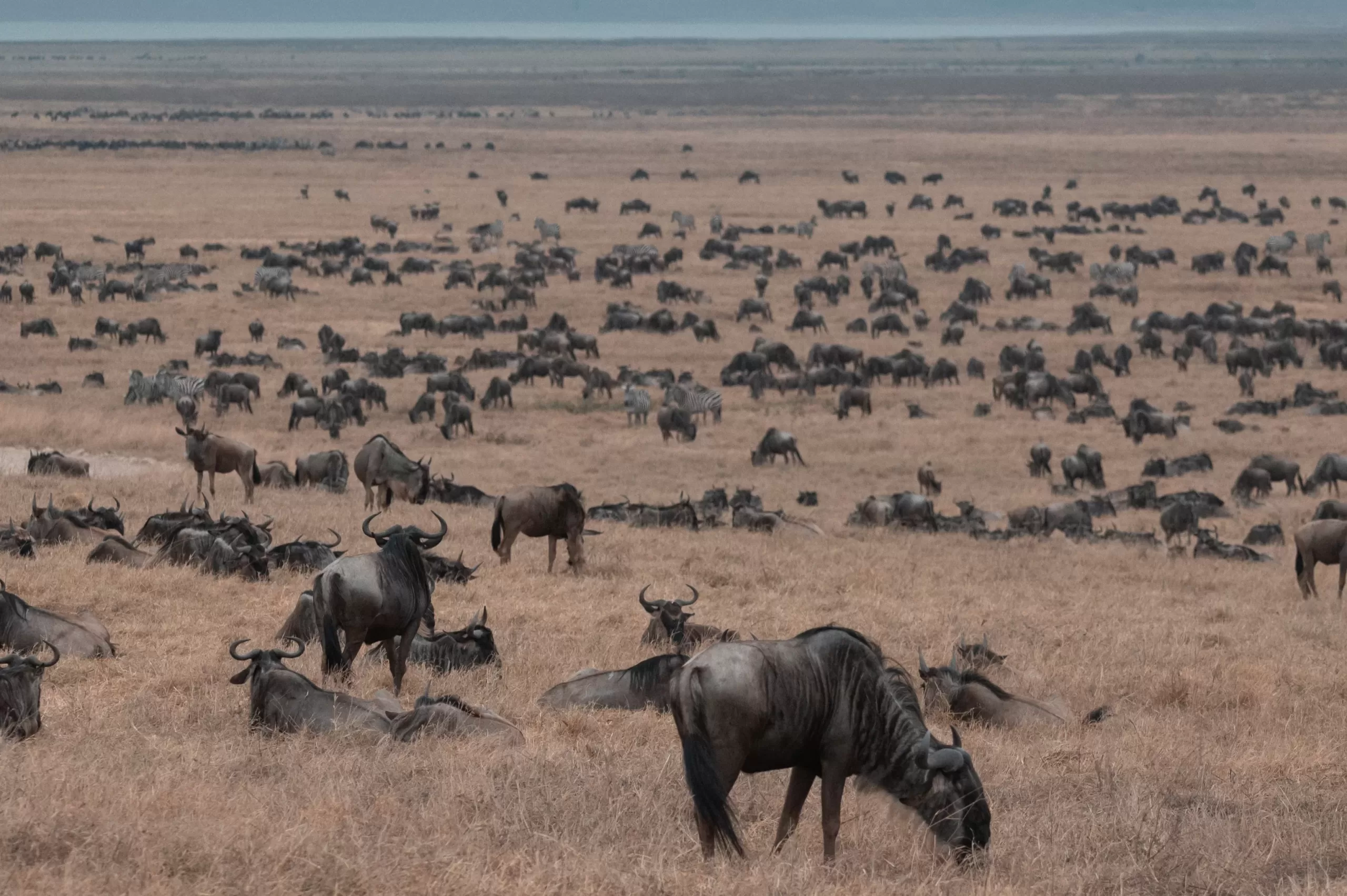
Entry Requirements
This will of course depend on a big factor which is the country from which you are flying, as of the writing of this article (check last updated information on the top of the page) the official Tanzania Government website for travelling to the country is: Entry Requirements – Tanzania Immigration Department
For a lot of countries a Visa is required and the official application website is this one: Tanzania eVisa – Start (immigration.go.tz)
Please contact us in case any of the links is broken or non-existent as they could be different in the future
Practical Information
We want to share some additional information that will make your journey a better overall experience.
Medical Precautions
Before visiting Tanzania, a visit to your doctor’s office is for sure a recommendation. It’s an opportunity to get the health guidelines for Tanzania depending on where you are travelling from, keep in mind the below are just recommendations based on the opinion of medical professionals we consulted, we have no credentials to provide medical guidance, it’s always recommended to seek it on your own.
Malaria: In our case, we opted for malaria prophylaxis. We had some concerns about potential side effects, so we sought our doctor’s opinion and did a bit of research. In the end, we decided on Malarone, and luckily, we didn’t experience any side effects. Although we didn’t come across many mosquitoes, it’s always better to be safe than sorry.
Tse-Tse flies: Keep in mind that tse-tse flies can also be found in the parks, so it’s a good idea to stay vigilant.. Wear mosquito repelant in uncovered parts of the body (arms, legs, neck) and if you have them, choose loose long sleeve shirts and trousers to reduce the possibility of a bit
In most cases you will be completely fine as the chances of getting ill with any of these two diseases is low, but you will feel more safe if you decide to go with our advice!
Water: Do not drink water from the tap, most of it is not safe for consumption, all safari booking tours will very likely provide you with bottled water.
E-SIM
If you wish to check out great deals for an E-SIM card during your stay to navigate the web or for simple phone calls, check Airalo:
ATMs, Money and Tipping policy
In Tanzania, US dollars are widely accepted and even preferred for most transactions as opposed to Tanzania Shillings (the official currency). We also used euros when we ran low on cash (in one occasion for a tip).
It’s generally better to withdraw money rather than relying on your card. While some places do accept cards, using them often incurs additional fees.
Tipping is a very common practice and generally expected. It’s customary to tip your safari guide, usually around 10 US dollars per day per person – depending on the country where you are coming from this might be a general practice but for some might not be as common.
If you need to use ATMs, you can do so as soon as you arrive at the airport. In some cities and villages, ATMs are available, so don’t hesitate to ask your guide for assistance.
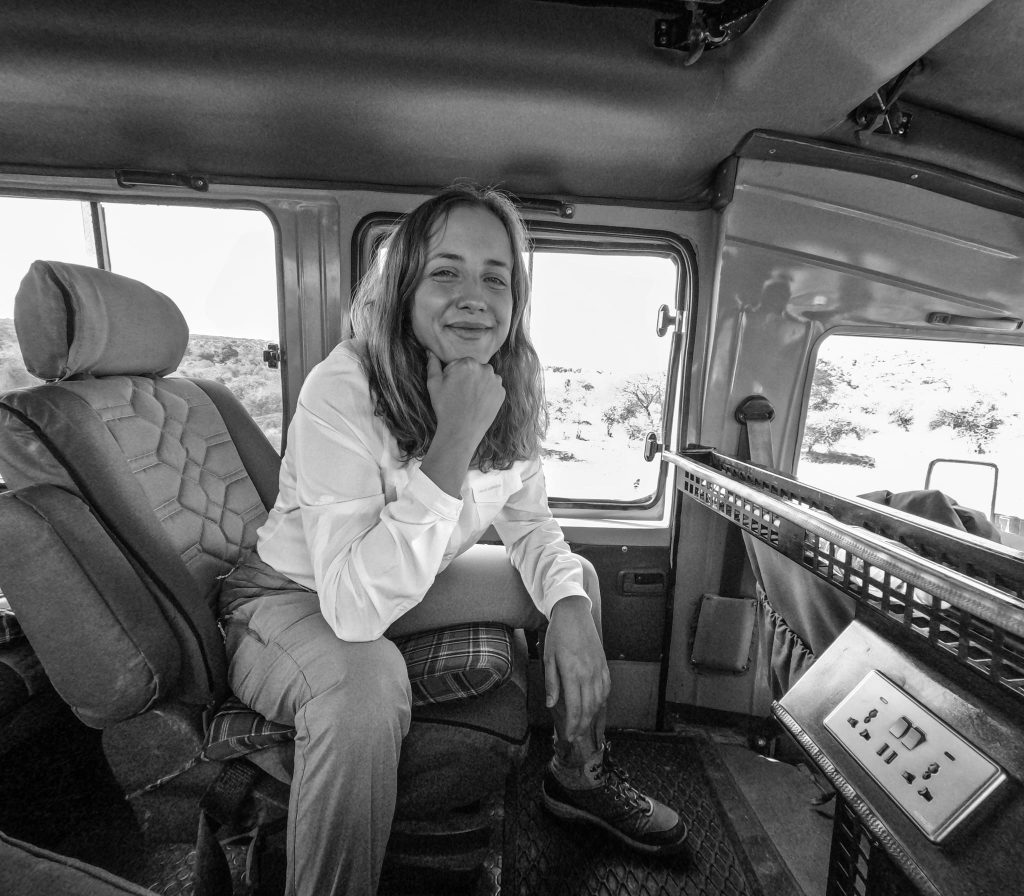
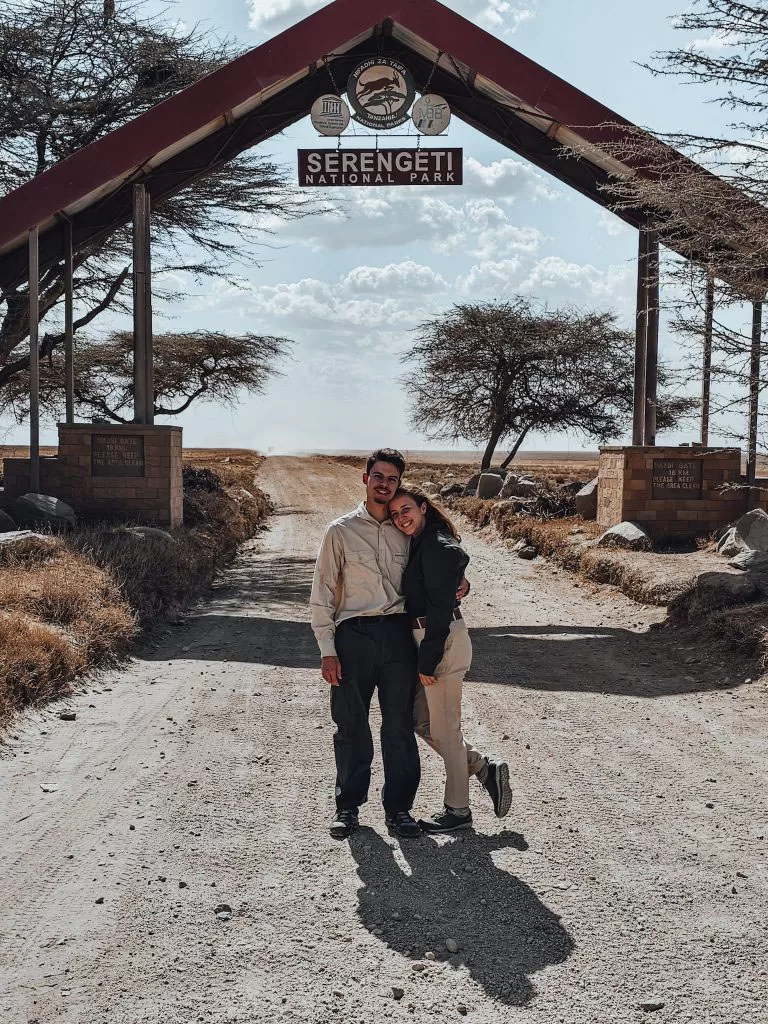
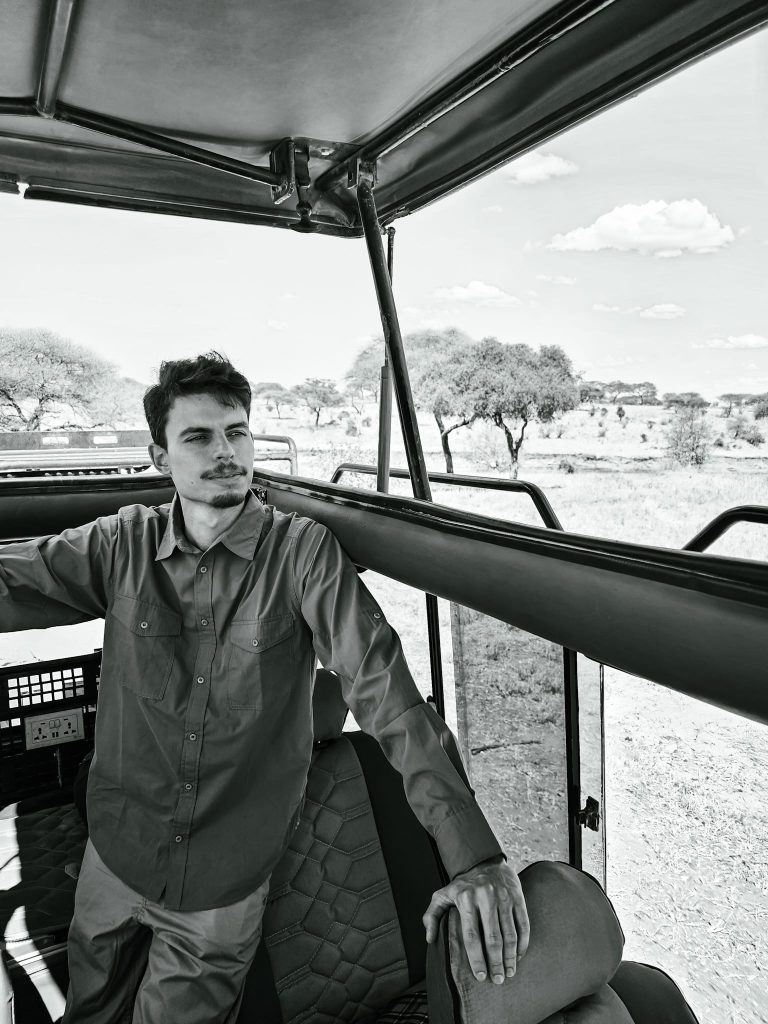
Negotiating Prices
In many countries this a common practice, while in many others it’s completely non existent so the first exposure to it might feel a bit odd (to us for example coming from Portugal, our first country where we experienced this practice was Vietnam and it was quite interesting, we were already prepared for it though!)
When it comes to souvenirs, keep in mind that they can be relatively pricey compared to what you might be accustomed to.
While bargaining is a common practice, and you can try to negotiate for a better price just remember, when bargaining, always strive to be fair and respectful.
Don’t feel obligated to buy for the first suggested price and if it doesn’t match your expectation it is okay to respectfully walk away, keep the negotiation respectful and most of all light and fun, it’s a common practice and it’s expected that you negotiate – still if you still feel uncomfortable for most situations you don’t need to engage on negotiations in a Safari trip as most things will be paid for in advance, the exception will be gifts or any local market products you buy.
Full Detailed Guide on Booking the Safari and the Hotels
For a complete article on how to organize the Safari trip please check our Ultimate Safari Guide for a detailed plan and more tips:
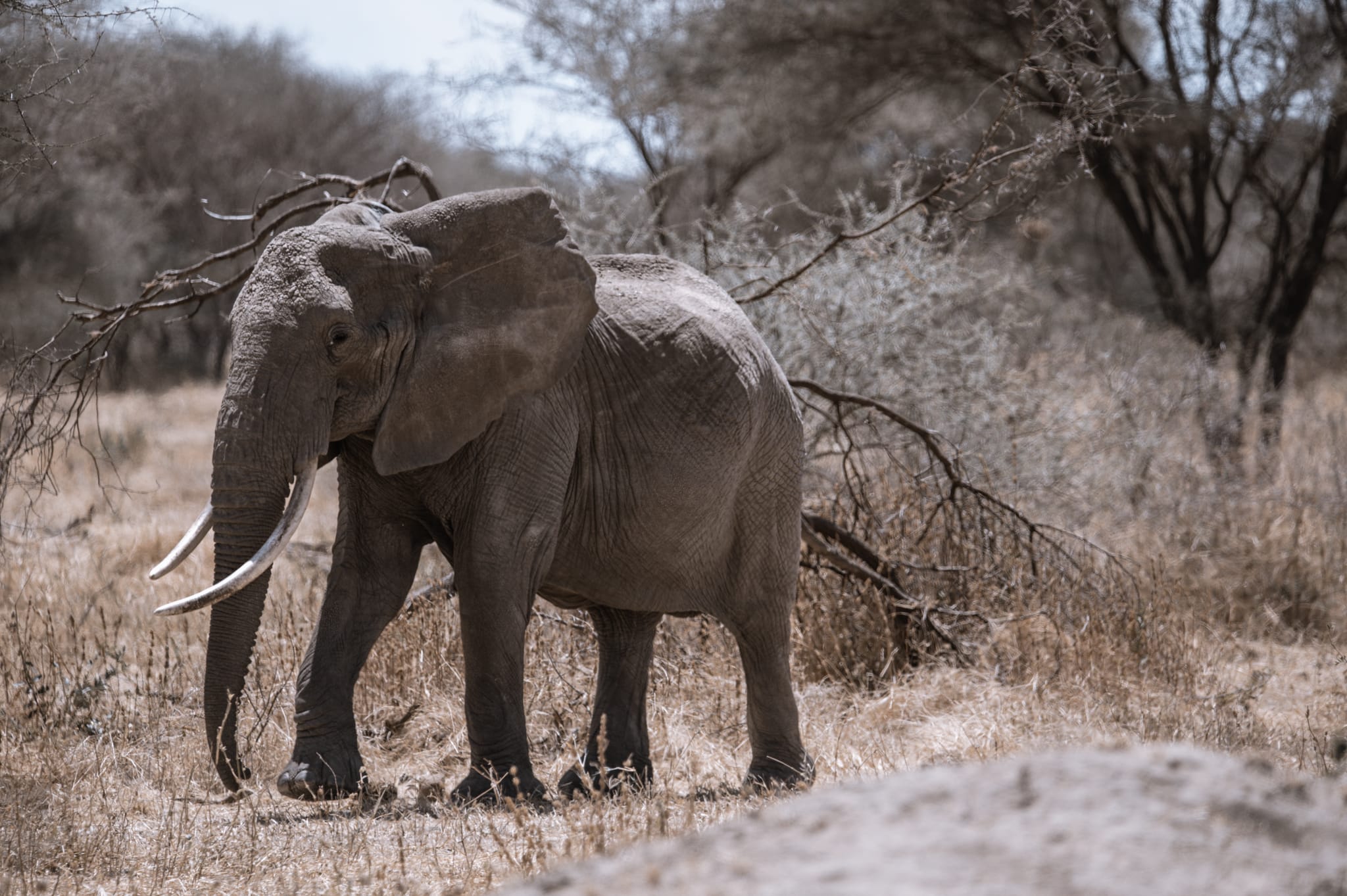
Ultimate Safari Guide Tanzania
How to Plan Step-by-Step
What to bring to your safari trip – The best time to do a safari in Tanzania – How to plan the trip – Plan according to your budget
